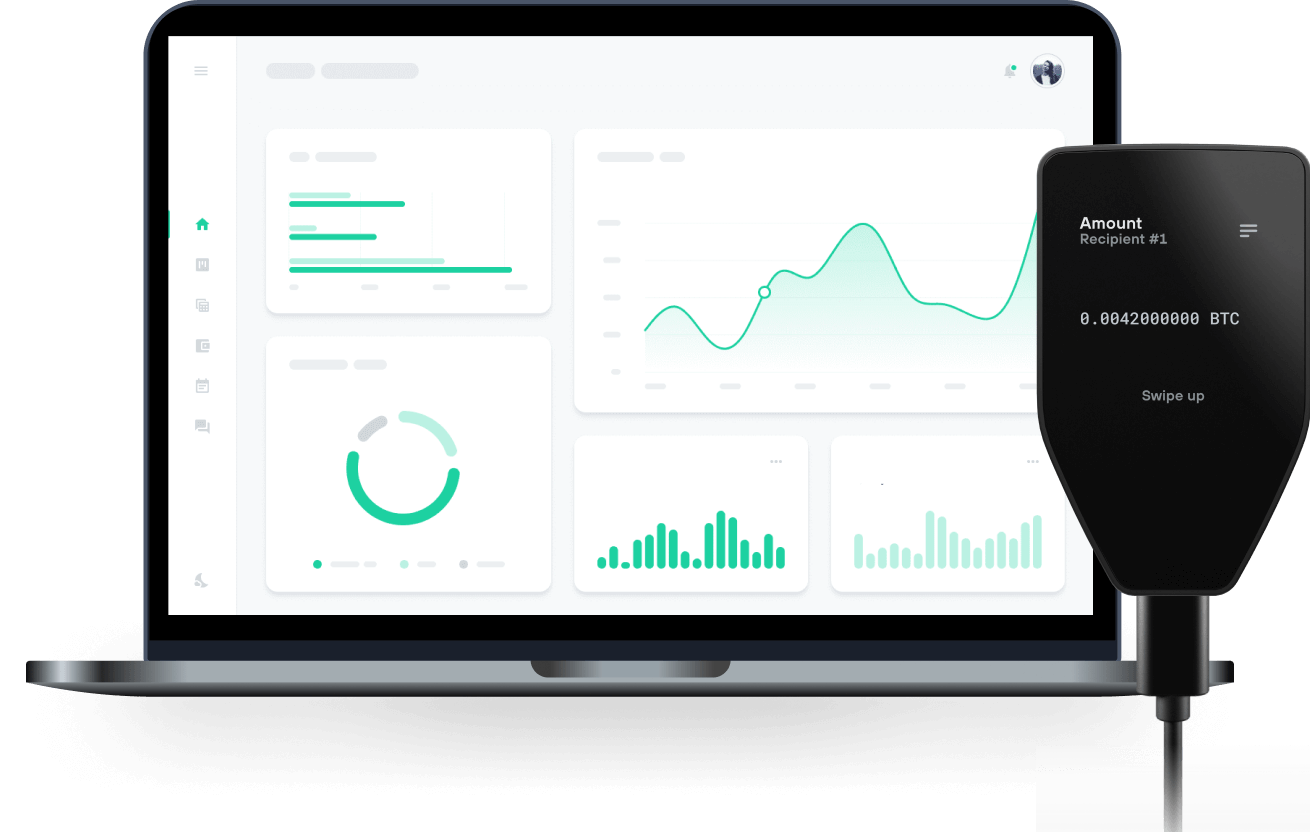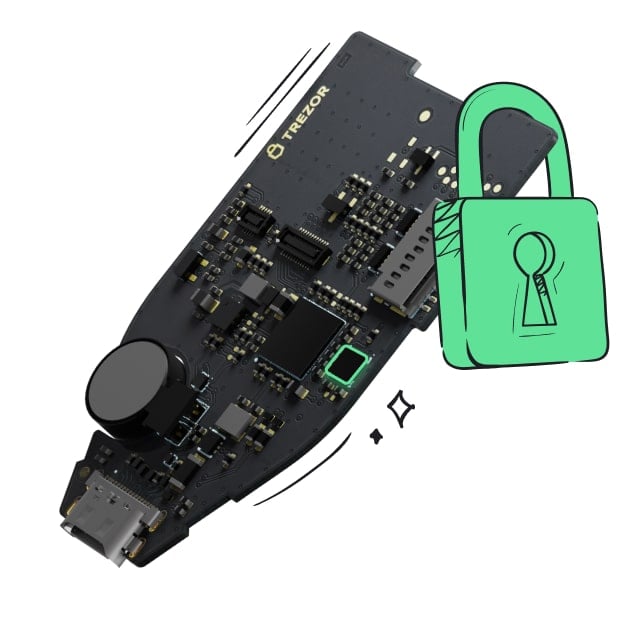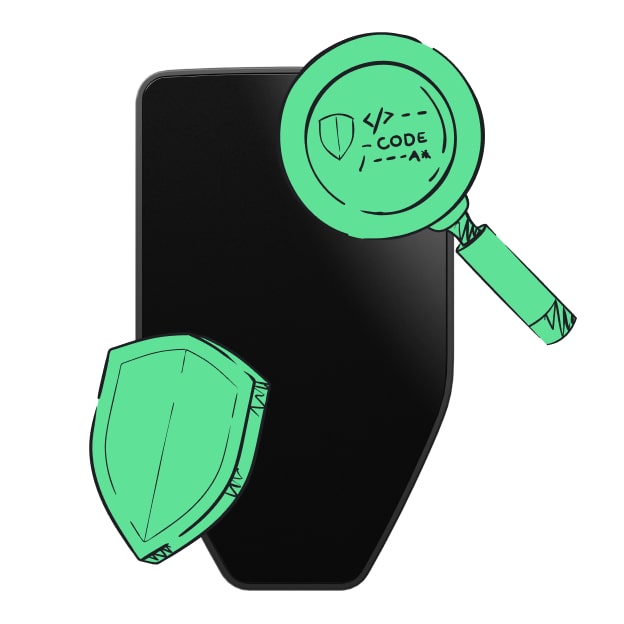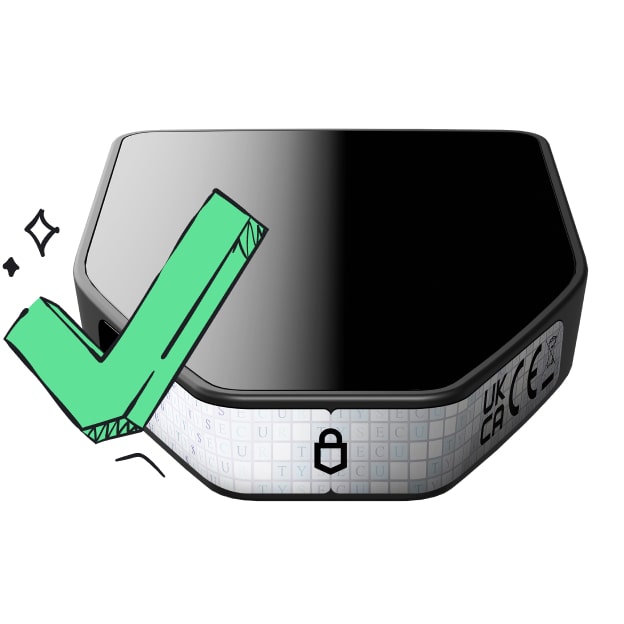Safe & secure Feathercoin wallet
Use the security of your Trezor hardware wallet to safely manage your Feathercoin.
- Secured by your hardware wallet
- Trusted by over 2 million customers

Send & receive your Feathercoin with Trezor Hardware wallets

Send & receive
Trezor hardware wallets that support Feathercoin
Supported Feathercoin Network
- Feathercoin
Why a hardware wallet?
Go offline with Trezor
- You own 100% of your coins
- Your wallet is 100% safe offline
- Your data is 100% anonymous
- Your coins aren’t tied to any company
Online exchanges
- If an exchange fails, you lose your coins
- Exchanges are targets for hackers
- Your personal data may be exposed
- You don’t truly own your coins
How to FTC on Trezor
Connect your Trezor
Open a third-party wallet app
Manage your assets
Make the most of your FTC
Trezor keeps your FTC secure
 Protected by Secure Element
Protected by Secure ElementThe best defense against both online and offline threats
 Your tokens, your control
Your tokens, your controlAbsolute control of every transaction with on-device confirmation
 Security starts with open-source
Security starts with open-sourceTransparent wallet design makes your Trezor better and safer
 Clear & simple wallet backup
Clear & simple wallet backupRecover access to your digital assets with a new backup standard
 Confidence from day one
Confidence from day onePackaging & device security seals protect your Trezor’s integrity
Feathercoin (FTC or ₣) is an open source cryptocurrency, published under the license of MIT / X11.1, based on the Litecoin protocol. On 16 April 2013 Feathercoin successfully forked from Litecoin by the creation of its genesis block. As a cryptocurrency, creation and transfer of coins is based on an open source cryptographic protocol (the blockchain) and is not managed by any central authority. The hashing algorithm chosen for Feathercoin was the Proof-of-Work NeoScrypt, which had premiered on Phoenixcoin. NeoScrypt is 25% more memory intense, which makes it less feasible to create ASICs for it.
The main programmer is Peter Bushnell, at the time running the information technology for the Brasenose College of Oxford University. He explained his motivation for developing the coin in an interview with Vitalik Buterin. One month after launching Feathercoin, Peter Bushnell left his job as head of IT at the Brasenose College of Oxford University and lived off his Litecoin savings. Feathercoin was launched on 16th April 2013 and as developed by Peter Bushnell. It was forked from Litecoin, with the aim of making Feathercoin what Litecoin was supposed to be: a faster, more secure, and stable version of Bitcoin.
The consensus mechanism is based on the Proof of Work (PoW) concept. The Feathercoin network runs on the NeoScrypt hashing algorithm, making it much easier and faster to mine. Feathercoin enjoyed rapid adoption by users soon after its launch, gaining immense popularity, and establishing itself as a worthy contender in a BTC/LTC dominated market.
Feathercoin can be mined using either processors (CPUs) or graphics cards (GPUs). Due to the hashing algorithm of FTC, it cannot be mined with an ASIC card. Mining software is available for download at their official site. Wallets for FTC can be found over at their official website, including both desktop and mobile wallets..
While the paper money you are used to carrying around is (or can be) stored in a physical wallet, cryptocurrencies, like all digital currencies, have to be stored in a software-based digital wallet. Although you will find links to feathercoin wallets throughout the web, the only safe way to know that you're downloading the latest and correct version is by scrolling to the bottom of the coin's official home page and selecting the button for your particular operating system. Feathercoin wallets are available for Android, Linux, macOS and Windows platforms.